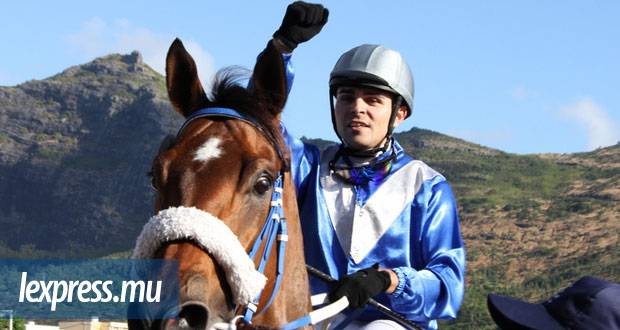Publicité
With a new helicopter, what does Mauritius really need to do to secure its seas
Par
Partager cet article
With a new helicopter, what does Mauritius really need to do to secure its seas

Mauritius has just got delivery of a second “Dhruv” helicopter from Hindustan Aeronautics Limited, which the government has said will boost its maritime security capabilities. But when it comes to guarding its waters, Mauritius has a serious problem that goes beyond helicopters.
1) Mauritius as a showcase
Recently, Mauritius received its Dhruv MK-III helicopter built by India-based Hindustan Aeronautics Ltd (HAL) under a $17.67 million deal that was signed back in January 2022. The deal is part of a $100 million line of credit offered by New Delhi back in 2021. The new chopper is the second Dhruv that Mauritius is running, the first one being given back in 2009, and expands the police’s helicopter squad to seven; including the older Dhruv, four Chetaks (Alouette IIIs built under licence by HAL) and a Fennec. “Mauritius has one of the largest exclusive economic zones in the world at 2.3 million square kilometres; so we need a lot of equipment to patrol these waters,” says Geopolitical strategist Kwang Poon, “for Mauritius, equipment like this will really help.”
Since the 1970s, Mauritius has sourced most of its defence needs from New Delhi, starting with patrol boat Amar with which it set up its coast guard. And Port-Louis has long benefited from surplus and refurbished Indian equipment: in the 1970s itself, Amar was followed by nine patrol boats, out of which five were replaced in 2000 by patrol boats built in Cochin. In 1993, Mauritius got the NCG Guardian, followed by an interceptor The Observer in 2001. In 1990, it got two other boats – this time from the USSR: the Rescuer and Retriever – with a Dornier plane from India coming that year and another in 2004.
However, Mauritius more recently went from getting defence second-hand surplus to becoming a showcase for new Indian defence tech as New Delhi looks to becoming a major arms exporter. Under an earlier $100 million line of credit offered back in 2005, Mauritius got its first Dhruv helicopter, a coastal radar system and another patrol boat. Not long after, in 2011, Mauritius became the first state to sign a $58.5 million deal (a $10 million grant and $48.5 million loan from India’s EXIM bank) to buy a new patrol boat Barracuda from manufacturers in Kolkata. That was followed by 10 interceptor boats and two patrol boats – Victory and Valiant – in 2014 under a $27 million loan and a third Dornier plane and Chetak helicopters through a $16 million line of credit in 2016.
Just last year, in April 2022, Mauritian announced that it had bought a new Dornier plane from HAL, touted as the first country to buy that model of aircraft from HAL under the same $100 million line of credit that has financed the deal over the latest Dhruv. “For both Mauritius and India, this is a win-win arrangement; India deepens its engagement in the region while Mauritius reinforces its maritime surveillance capacity,” says Poon. The latest Dhruv delivery comes just as New Delhi is starting to put on its 2023 aeroshow, looking to sign defence deals with global arms buyers.

2) The problem in Mauritius
To what extent do such purchases really help Mauritius safeguard its seas? The problem, as it turns out, is not in New Delhi, but in Mauritius, when it comes to using these wares. “We have a large EEZ, but in my opinion, we do have the necessary equipment to patrol that,” says Alain Malherbe, a professional in the maritime industry over the past four decades. The problem, he suggests, is Mauritius’ poor track record when it comes to using such hardware. Take the helicopter squad – set up in 1974 and trained within Mauritius under Indian Air Force supervision since 1992. In recent years, its image has taken a brutal hit. When the Wakashio oil spill happened in August 2020, the lack of a rapid response by the helicopter squad was evident. Answering why choppers did not rush out to meet the Wakashio in the early days of what would become Mauritius’ worst ecological disaster in its history, Prime minister Pravind Jugnauth told parliament on 28 August 2020, “Among the six helicopters, only Dhruv has night flying capabilities but could not be deployed as it was on maintenance until August 7, 2020.”
This was not a one-off. Despite spending Rs199.8 million to maintain its six helicopters between 2016 and 2020, what the latest national audit report (2020-2021-ed.) found was that during the preceding three years the Chetaks and the Dhruv helicopters were unusable for 261 and 362 days respectively, while the Fennec was out of commission for 214 days in 2020 alone. The Dhruv chopper (MPH07) was earlier damaged by a botched up fuel pump repair that cost another Rs12.4 million to fix.
This problematic use was not limited to choppers, but extended to boats and the Dornier planes too. In its 2019-2020 report, the audit noted that out of the four planes in the maritime air squad – formed in July 1990 – only two were actually working. The latest Dornier bought last year was not to supplement that strength of aerial patrols over Mauritius’ EEZ, but rather had been pushed for by the police force since November 2019 to replace planes that could not fly.
When it comes to ships and boats, the Guardian was left floating at sea on several occasions and has been unused since March 2020. “If you look at the boats of the coast guard, we have five of them and 90 per cent of the time they are just parked at the dock in Port-Louis,” argues Malherbe, “while the Dornier planes just take off from the airport, circle around the coast, and then go back. They do not fly over the EEZ. So, what is the point of buying new equipment and getting further into debt when we are not using the equipment we do have properly?”

3) Radars and AIS
Choppers and boats are not enough to handle Mauritius’ increasing maritime security problem. And the threat for Mauritius has shifted: back in 2009, with Somali pirate attacks leading to a 20 per cent drop in tuna supplied to its canneries, Mauritius’ fish exports came under threat and the importance of maritime security hit home. States such as Mauritius and Seychelles volunteered to put Somali pirates on trial and jail them, before eventually extraditing them back to Somalia. Today, the problem is not so much Somali pirates anymore, but drugs. Back in 1986, the CIA in a report warned that “over the longer term, the inability of the authorities to control the borders may encourage international smugglers to use Mauritius as a regional tranship point for narcotics destined for other markets”.
Starting in 2000, as smuggling routes in the Balkans were firmed up, heroin from Asia started moving through East Africa, with richer states such as Mauritius and Seychelles becoming heroin destinations by themselves. Accustomed to catching drug mules aboard flights or catching drugs through the post, the maritime dimension of the problem hit Mauritius as late as 2012 when a steward abroad the Trochetia was caught for being part of a regional smuggling operation out of Madagascar and dumping drugs just off the Mauritian coast to be picked up later. Since then, a number of drug seizures in Reunion Island aboard boats destined for Mauritius have only further highlighted the regional maritime smuggling problem.
For Mauritius, this raises two problems: the first is that the lack of serviceable coast guard equipment and uneven distribution of coast guard posts across the coastline leave gaping holes in its maritime security. “Whether it’s illegal fishing by both state and non-state fishing fleets or drug smuggling, there is a significant economic interest in looking at maritime security,” says Poon. Mauritius is a member of multiple multilateral forums looking at maritime security ranging from the Indian Ocean Rim Association, the Indian Ocean Commission and the Colombo Conclave, “but these have a different focus and work in the larger interests of the states that sponsor them which is natural. We have about 30,000 ships that pass near Mauritian shores each year, so the risk of something happening is always there of a major maritime incident once every few years. We are a small island and what we need to do is pool our resources with our neighbours to react to problems,” says Poon.
The second problem is very much like the problem with helicopters, planes and boats: a peculiarly Mauritian problem of not using what it has. Maritime surveillance for Port-Louis means a mix of using both coastal radars built in 2011 and Automatic Identification System (AIS) stations to identify shipping passing through its waters. In its 2019-2020 report, the government auditor pointed out that it was not known just how much of the EEZ was covered by these radars. “As such the effectiveness of the objectives of the CSRS, that is, EEZ surveillance and enhancing the rescue capabilities amongst others, could not be ascertained.”. It actually pointed out that multiple radars – such as those in Gris-Gris, Agalega and St. Brandon – were not even working. A year later, the next audit report concluded that the coastal radar system “had become obsolete” (in 2022, the government announced that it was replacing its radar system). If the radar system was not doing its job, the government retorted, the Mauritian government still had other means such as the AIS to protect its waters.
In theory, yes. In practice, not really. On paper, Mauritius has one of the most stringent requirements when it comes to AIS reporting. The Fisheries and Marine Resources (automatic identification system) regulations 2016 puts the onus on ship owners and crews to keep their AIS systems running at all times to the coast guard, except when anchored in Port-Louis. A preliminary inquiry report submitted to the government on August 27, 2020, after the Wakashio disaster recommended further tightening the rules to having large ships not only to keep their AIS systems on but also to keep in contact with the coast guard when passing by ecologically sensitive areas in Mauritian waters. “By law, any ship above 500 tonnes needs an AIS system on it and most smaller non-Mauritian pleasure craft have them,” says Malherbe “Some small states mandate that all ships have an AIS system, but this is not the case in Mauritius, where Mauritian pleasure craft and yachts don’t have to put in AIS systems but even radios! At the moment anybody can just get into a boat to Reunion Island or Madagascar and come back without anybody knowing about it. There is no control.”
And even when it comes to larger, foreign ships that need to have AIS systems turned on by law, there are a lack of prosecutions of AIS-related offenses in Mauritian courts even though international reports have pointed out such offenses are quite common in the Indian Ocean. The law might be strict, but meaningless, if not enforced. And smaller, Mauritian boats involved in smuggling left outside the net means that such laws are powerless to stop the biggest problem when it comes to Mauritius’ maritime security.
Publicité
Les plus récents






